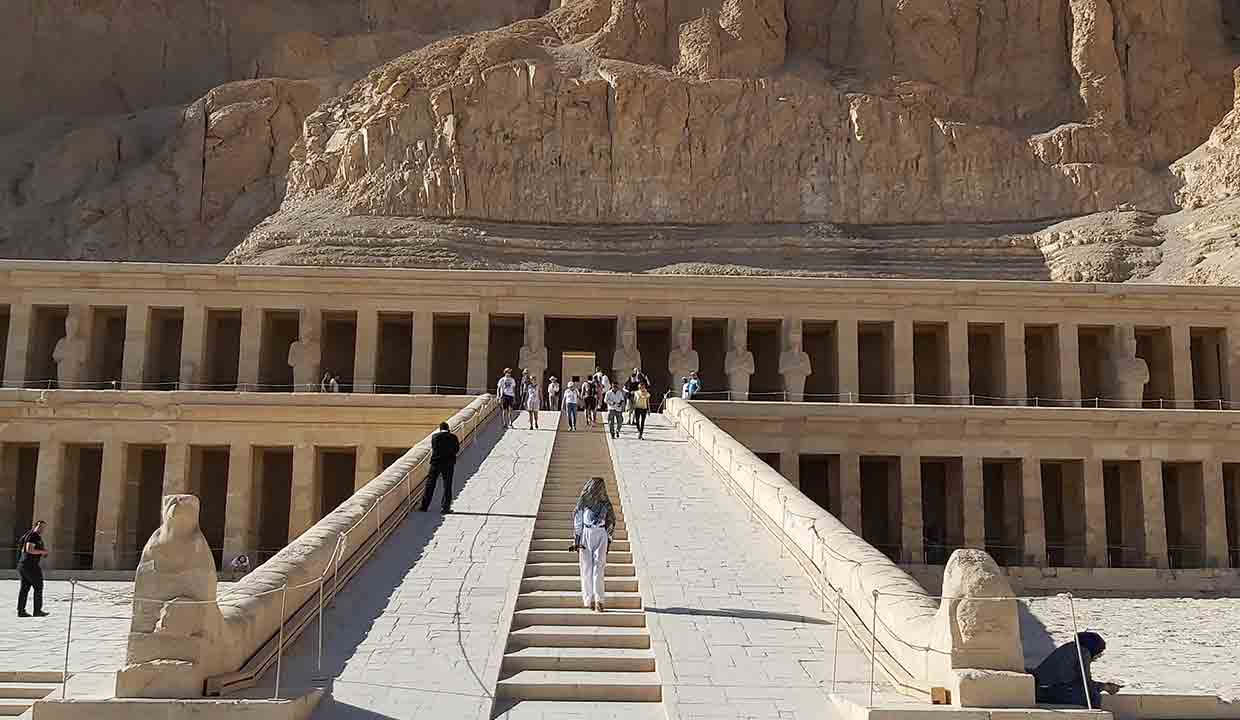Discover the Hatshepsut Temple in Luxor: a testament to Egypt’s glorious past & architectural prowess, beckoning history enthusiasts worldwide!
Introduction
Amidst the awe-inspiring landscape of ancient Egypt, the Mortuary Temple of Hatshepsut stands as a testament to the grandiosity and meticulous precision of historical architectural endeavors. Perched opposite the vibrant city of Luxor, this venerable structure beckons enthusiasts of history, architecture, and culture alike, unveiling a tapestry of tales woven through time.
The Majestic Hatshepsut
Hatshepsut, the fifth pharaoh of the 18th dynasty, is one of the most powerful women in ancient Egyptian history. Her reign (1478–1458 BC) was marked by prosperity, ambitious building projects, and a focus on trade and diplomacy. The Mortuary Temple of Hatshepsut is a monumental tribute to her legacy, embodying her vision and architectural brilliance.
The Architectural Marvel
Designed by the revered architect Senemut, the temple, also known as Djeser-Djeseru (“the Holy of Holies”), is a marvel of harmony, symmetry, and grandeur. It immaculately integrates with the surrounding cliffs and landscape, forming a captivating visual spectacle that mirrors the pharaoh’s potent and refined aesthetic sense.
Unique Design Elements
-
Terraced Structure:
The temple boasts a distinctive three-tiered, colonnaded structure. Each level is adorned with porticos, statues, and intricately carved reliefs showcasing mythological and historical scenes.
-
Sacred Sanctuary:
At the innermost sanctuary, visitors encounter a revered chapel dedicated to the goddess Hathor, signifying the pharaoh’s deep spiritual connection and devotion.
-
Alignment Precision:
The temple’s axis aligns meticulously with the distant Valley of the Kings, underpinning the ancient Egyptians’ acute awareness of astronomy and spatial orientation.
Preservation and Restoration
The passage of time, natural calamities, and vandalism have inevitably left their marks on the Mortuary Temple of Hatshepsut. Nevertheless, concerted preservation and restoration efforts continue to breathe life into this architectural masterpiece, ensuring that its majesty endures for future generations to behold.
Visiting the Temple
Travel Essentials
- Location: Opposite Luxor city, near the Valley of the Kings in Upper Egypt.
- Getting There: Luxor is accessible by air, rail, and road, with the temple situated a short drive from the city center.
- Timings: The temple is open from 6 am to 5 pm, with ticket counters closing at 4 pm.
- Entry Fees: Fees vary, with discounts available for students and Egyptian residents.
Best Time to Visit
With Egypt’s typically hot climate, the ideal time to visit the Mortuary Temple of Hatshepsut is between October and April, when the weather is relatively cool and pleasant.
Conclusion
A visit to the Mortuary Temple of Hatshepsut is not just an architectural pilgrimage; it’s a journey through time, where each stone whispers tales of power, devotion, and unparalleled artistic vision. As you stand amidst its colossal columns and gaze upon its timeless reliefs, you can almost hear the echoes of a civilization that continues to fascinate and inspire to this day. Whether you are a student, historian, or a casual traveler, the temple’s magnetic allure promises an experience you’ll cherish for a lifetime.
